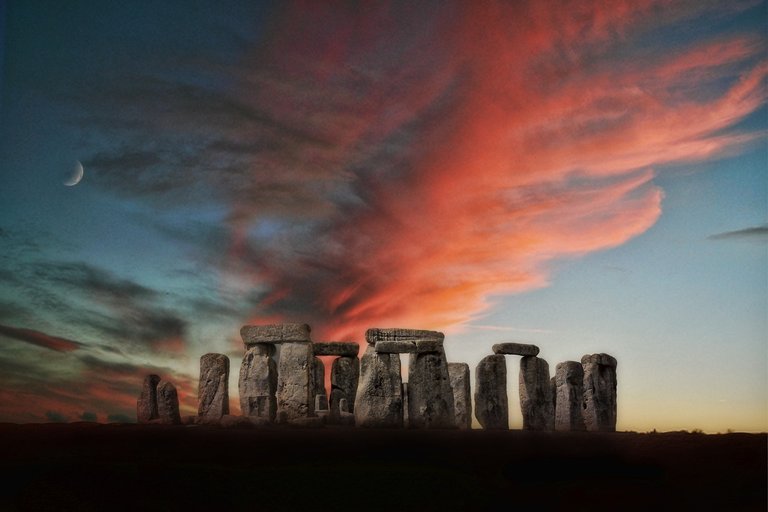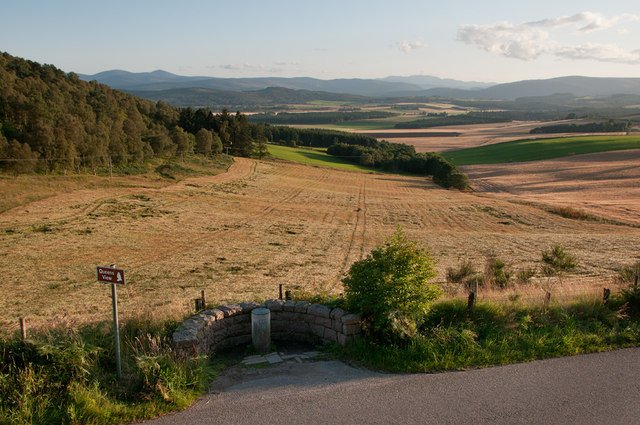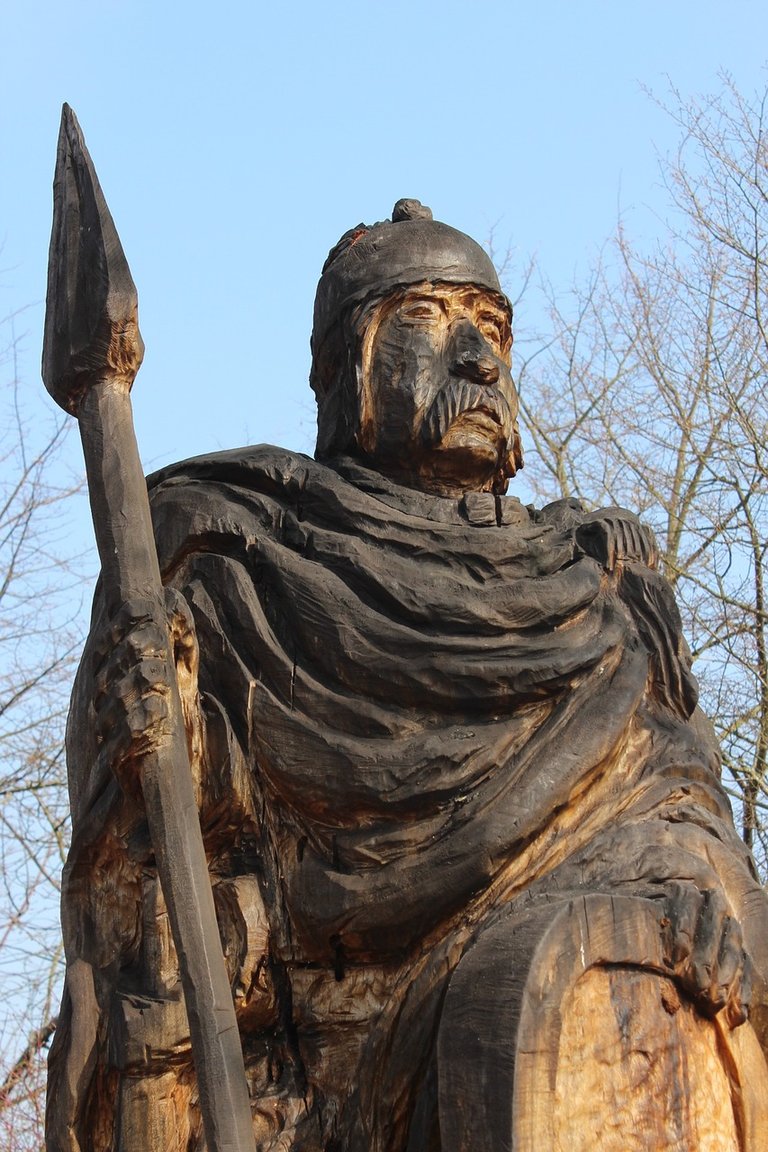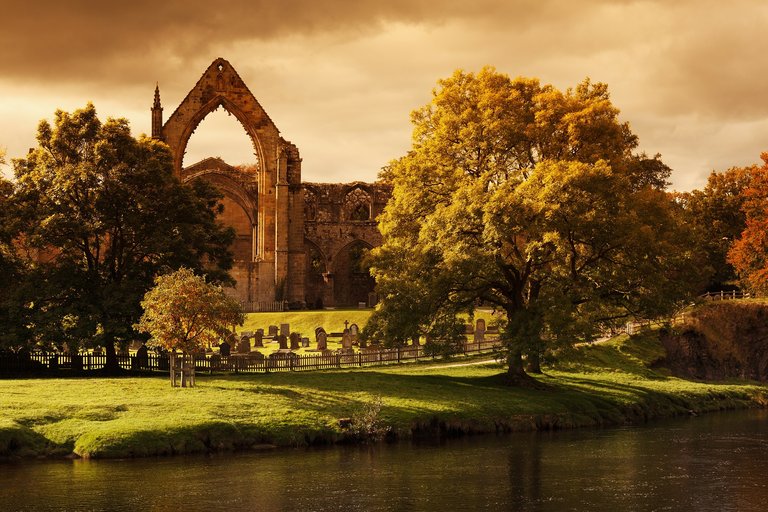
Long ago, the British Isles weren't isles at all. Britain was part of the European continent. The English Channel did not exist and East Anglia merged into the Netherlands. Then, about 10,000 years ago, when the last Ice Age had ended, when the bones of the last mammoth had sunk into the mud of the Thames Valley, when the climate grew warmer. New rivers and seas were formed and Europe was slowly molded into its present shape.
The people of Britain, like their cousins on the continent were simple hunters who lived on the flesh of wild animals, which they shot with flint - tipped arrows or caught in traps. They killed fish in the estuaries and shallow rivers with Spears made from deer antlers. They ate wild fruit, nuts and honey.

There were no permanent houses. They moved from place to place, sheltering in caves in winter. They lagged behind the people of warmer countries in their development. The Egyptians were already building Pyramids and writing literature.
Of all the stages between the cave and the skyscraper, perhaps man's greatest leap forward was taken when he became a farmer. Clearing patches in the forests which covered most of Britain. They kept half - wild cattle and grew grain.

A simple plough also appeared about this time. These improvements allowed people to settle in villages. They stored food in underground larder. The mining and trading grew rapidly. Copper was imported from Ireland and tin from Cornwall. Amber came from the Baltic. Carts were made for moving heavy goods
The people of the Wessex culture ( Southern England) developed the most advanced society Britain had seen. Building continued at Stonehenge, complicated funeral ceremonies and they made ornaments of gold. The British were learning to smelt iron and used it to make strong tools.

The Celts arrived at the start of the Iron Age. Archeologists have discovered at least 3 Celtics groups. They came roughly from the area of Belgium. During this era, large forts, with walls reinforced by earth timber and stone were built in many parts of the country. The largest of the English hill forts were in Maiden Castle in Dorset. An Iron Age house was found at little Woodbury in Wiltshire.
Britain was unknown to the more civilized parts of Europe until it was visited by a merchant called Pytheas. His first impressions of the Celts were that they were gentle folk. The next visitor, Julius Ceasars, described the British as a fierce race - savages who dyed their skin blue with woad.

He was probably wrong about blue - skinned Britons as he came in no friendly spirit. The Romans under Julius Cease, conquered Britain not long after his visit and stayed till the year 406. Many remains can still be seen of the Romans.
Sources : History of Britain, World Book encyclopedia.
Informative text and well chosen images, thank you!
great information....
Hello. thanks for information, nice photos
Follow me
Hi! I am a robot. I just upvoted you! I found similar content that readers might be interested in:
http://4flaga.ru/104-people-of-ancient-britain.html